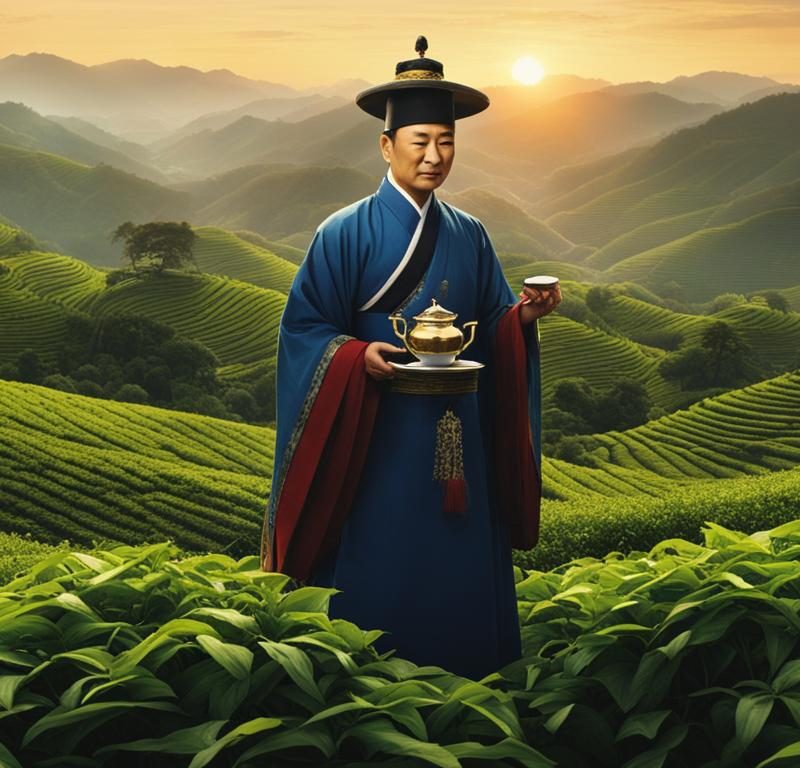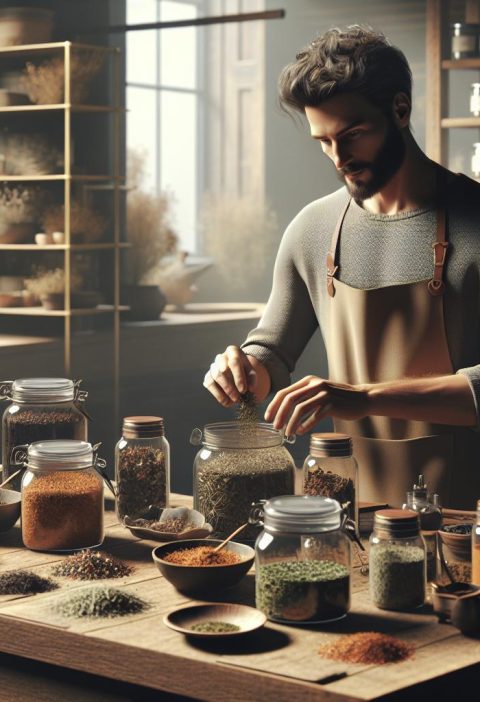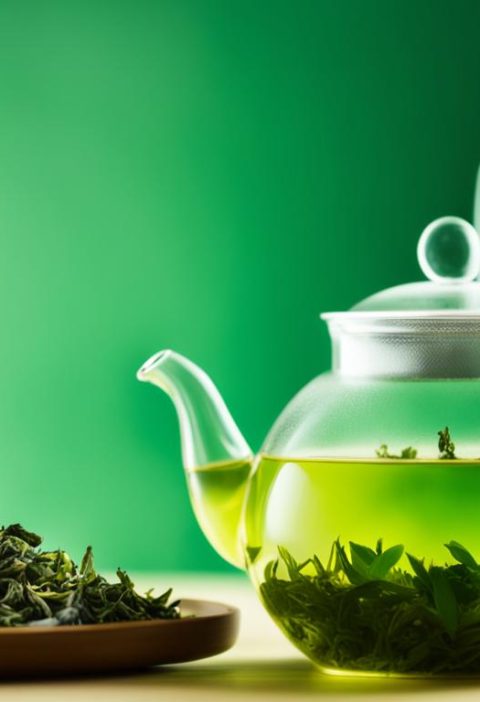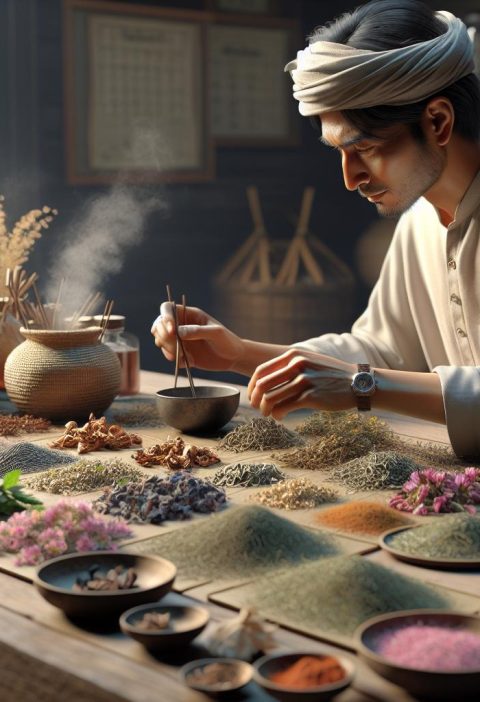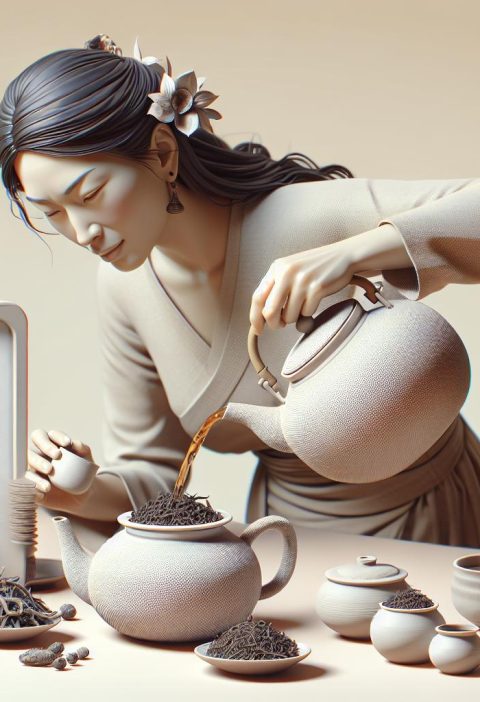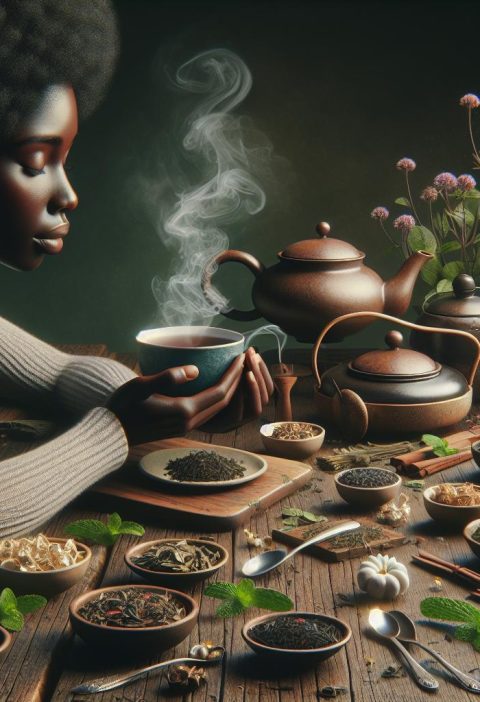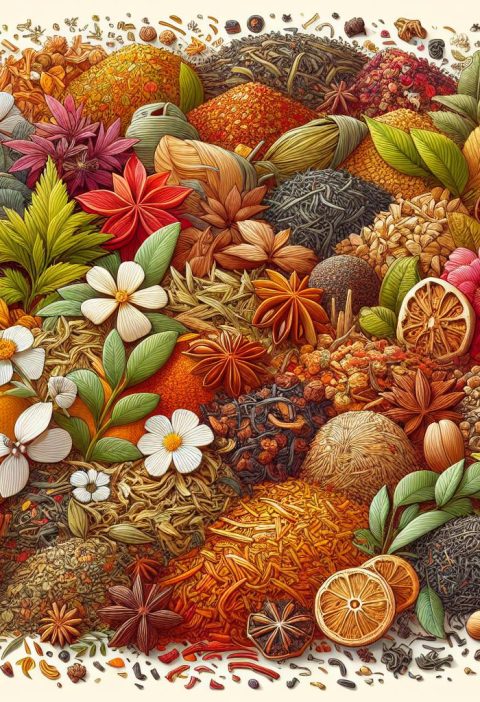Oolong tea is a unique type of tea that falls between green tea and black tea in terms of oxidation. It offers a wide range of flavors and aromas, making it a popular choice among tea enthusiasts. In this comprehensive guide, we will explore the cost-effectiveness of various oolong tea varieties, as well as the health benefits they offer. Whether you’re looking for budget-friendly options or want to discover the best oolong teas for your taste preferences, this guide has you covered.
The History of Oolong Tea
Oolong tea has a rich history that dates back to the Tang Dynasty. Its origins are disputed, with both China and Taiwan claiming it as their own. One story suggests that oolong tea was first known as Beiyun Tea and originated from the Beiyun region in Fujian province, China. Another story credits a farmer named Wu Liang with accidentally creating oolong tea. Regardless of its origins, oolong tea has become an integral part of Chinese and Taiwanese cultures. Its unique flavor and the intricate process of cultivation and processing have made it a beloved tea variety.
Key Takeaways:
- Oolong tea originated either from the Beiyun region in China or was accidentally created by a farmer named Wu Liang.
- It has a significant presence in Chinese and Taiwanese cultures.
- The cultivation and processing of oolong tea involve intricate techniques.
The History of Oolong Tea
Oolong tea has a fascinating history that traces back to the Tang Dynasty in China. However, its exact origins are the subject of dispute between China and Taiwan. One story suggests that oolong tea was first known as Beiyun Tea and originated from the Beiyun region in Fujian province, China. Another tale credits a farmer named Wu Liang with accidentally discovering oolong tea. Regardless of its true origins, oolong tea has become an integral part of both Chinese and Taiwanese cultures.
The cultivation and processing of oolong tea have been refined over centuries, resulting in a unique and beloved tea variety. Known as “Black Dragon Tea” or “Wulong Tea,” oolong tea offers a captivating flavor profile and aromatic experience that sets it apart from other teas. Its popularity has spread beyond Asia, gaining recognition and appreciation worldwide.
Origins of Oolong Tea
During the Tang Dynasty, oolong tea began to gain recognition for its exceptional taste and distinctive characteristics. The tea’s complex preparation process involves partial oxidation, giving it a unique flavor that straddles the line between green and black tea. With its balanced attributes and diverse flavor palette, oolong tea quickly gained popularity among tea enthusiasts, both domestically and internationally.
The Tang Dynasty: Oolong Tea’s Golden Era
The Tang Dynasty (618-907 AD) is considered the golden era of oolong tea. During this time, the cultivation and processing techniques of oolong tea were refined and perfected. The popularity of oolong tea soared, with the tea becoming a staple in social gatherings, ceremonies, and even poetry. The Tang Dynasty set the stage for the ongoing success and widespread appreciation of oolong tea throughout history.
In the next section, we will delve into the various types of oolong teas available, each offering its own distinct characteristics and flavor profiles.
Types of Oolong Tea
Oolong tea offers a diverse range of flavors and characteristics, with various types available to suit different preferences. Let’s explore the different varieties of oolong tea:
Taiwanese Oolong Tea
Taiwanese oolong teas are known for their lighter taste and appearance. They undergo less oxidation compared to Chinese oolong teas, resulting in a more delicate flavor profile. Taiwanese oolong teas often have floral and fruity notes, making them a refreshing choice for tea enthusiasts.
Chinese Oolong Tea
Chinese oolong teas exhibit a wide range of oxidation levels, offering a spectrum of flavors from light to dark. Light oolong teas, such as Tie Guan Yin and Baozhong, have a greener taste with subtle floral and fruity undertones. On the other hand, dark oolong teas like Da Hong Pao and Shui Xian have a deeper, richer flavor with hints of biscuit and caramel.
To help visualize the differences between Taiwanese and Chinese oolong teas, refer to the table below:
| Type of Oolong Tea | Flavor Profile | Oxidation Level | Origin |
|---|---|---|---|
| Taiwanese Oolong Tea | Light and delicate with floral and fruity notes | Less oxidized | Taiwan |
| Chinese Oolong Tea | Varies from light to dark with greener or richer flavors | Light to heavily oxidized | China |
As you explore the world of oolong tea, consider the type that suits your personal taste preferences. Whether you prefer the light and fruity Taiwanese oolong teas or the rich and robust Chinese oolong teas, each variety offers a unique and enjoyable tea-drinking experience.
Health Benefits of Oolong Tea
Oolong tea is not only a delightful beverage but also offers various health benefits that make it a favorite choice among tea enthusiasts. Let’s explore the significant health benefits associated with oolong tea:
- Weight Loss: Oolong tea has been found to aid in weight loss by boosting metabolism and promoting fat burning. Its natural compounds can help accelerate the calorie-burning process and assist in shedding those extra pounds.
- Heart Disease: Regular consumption of oolong tea has shown promising results in reducing the risk of heart disease. Studies suggest that it can help lower bad cholesterol levels and improve overall cardiovascular health.
- Diabetes: Oolong tea may be beneficial for individuals with diabetes due to its ability to regulate blood sugar levels. The polyphenols in oolong tea can help improve insulin sensitivity and control glucose levels.
- Cancer: Some research suggests that the antioxidants found in oolong tea may have cancer-fighting properties. These antioxidants help neutralize harmful free radicals, reducing the risk of cancer development.
- Dental Health: Oolong tea contains fluoride, a mineral that supports dental health. Regular intake of oolong tea can help prevent tooth decay, strengthen tooth enamel, and promote healthier gums.
Oolong Tea and Weight Loss
Oolong tea is widely recognized for its ability to aid in weight loss. The combination of natural compounds found in oolong tea, such as catechins and caffeine, helps boost metabolism and promote fat burning. These compounds stimulate the body’s energy expenditure, resulting in increased calorie burning and potentially facilitating weight loss.
Furthermore, oolong tea can help suppress appetite and reduce food cravings, making it easier to stick to a balanced diet and maintain a healthy weight. By replacing sugary beverages or high-calorie snacks with a cup of oolong tea, individuals may experience enhanced weight management and improved overall well-being.
If you’re looking to shed a few pounds or maintain a healthy weight, incorporating oolong tea into your routine can be a valuable addition to your weight loss journey.
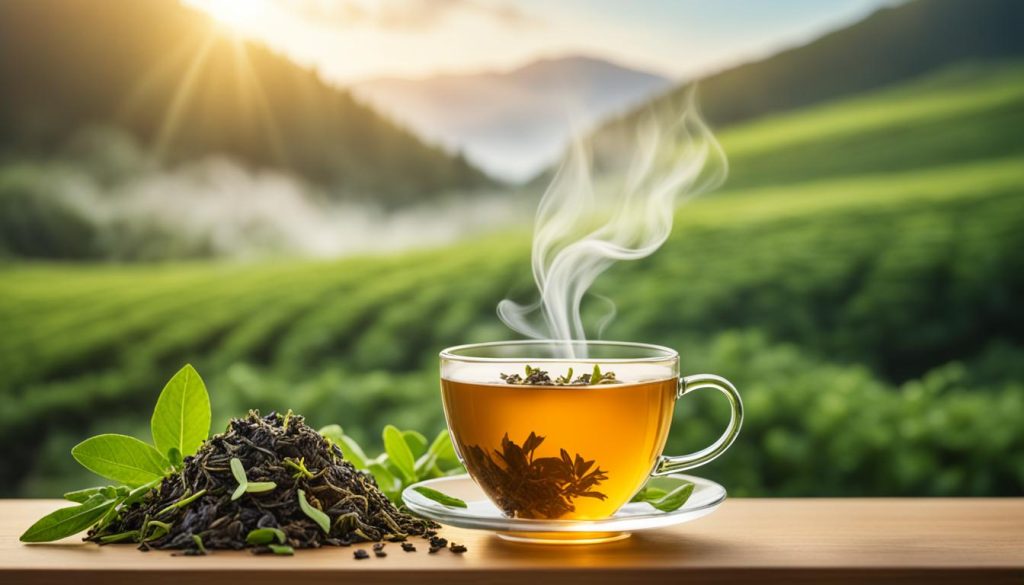
How Oolong Tea is Made
The production of oolong tea involves a meticulous process that results in its unique flavor and aroma. Let’s explore the steps involved in the oolong tea production process:
- Oxidation: After the tea leaves are carefully harvested, they undergo a process called oxidation. The leaves are bruised to break their cell walls, allowing the naturally occurring enzymes to interact with the air. This initiates the oxidation process, which can range from light to medium to dark depending on the desired characteristics of the oolong tea.
- Withering: Once oxidized, the leaves undergo withering. This step involves exposing the leaves to controlled airflow to remove excess moisture. The withering process helps reduce the water content, making the leaves more flexible and easier to handle in subsequent steps.
- Rolling: Rolling is a crucial step where the withered leaves are twisted and rolled. This action releases essential oils within the leaves and gives them their distinctive shape. The rolling process also contributes to the development of the tea’s flavor and aroma.
- Roasting: Following rolling, the leaves are roasted to halt the oxidation process and deepen the flavor profile. Roasting can be done using various methods, such as pan-frying or baking. Different levels of roasting can result in different flavor profiles, ranging from light and floral to rich and toasty.
- Drying: After roasting, the leaves undergo a drying process to remove any remaining moisture. This finalizes the tea’s taste and texture, ensuring its long-term preservation.
- Sorting: The last step involves sorting the processed leaves based on their size, shape, and overall quality. This step ensures that only the finest leaves are selected for packaging and distribution.
| Step | Description |
|---|---|
| Oxidation | Allows enzymes to interact with air, resulting in different levels of oxidation. |
| Withering | Removes excess moisture, making the leaves more flexible. |
| Rolling | Twists and rolls the leaves, releasing essential oils and shaping them. |
| Roasting | Halts oxidation and develops the tea’s flavor through various roasting methods. |
| Drying | Removes remaining moisture and finalizes the tea’s taste and texture. |
| Sorting | Selects leaves based on size, shape, and quality for packaging and distribution. |
Choosing a Quality Oolong Tea
When it comes to choosing a quality oolong tea, there are a few key factors to consider. These factors will help you determine the overall taste, aroma, and brewing experience. Two important aspects to pay attention to are the oxidation level and the shape of the tea leaves. Let’s explore how these factors can help you find the perfect oolong tea.
Oxidation Level
The oxidation level of oolong tea plays a significant role in determining its flavor profile. Generally, lighter oolong teas are less oxidized, resulting in a greener taste with subtle floral or fruity notes. On the other hand, darker oolong teas have a higher level of oxidation, offering a richer and more complex flavor with hints of caramel or roasted undertones. Choose the oxidation level that appeals to your personal taste preferences.
Shape of Tea Leaves
The shape of the tea leaves is another indicator of quality when selecting an oolong tea. Premium oolong teas are often made with tightly rolled or balled-up leaves. This shape not only adds to the aesthetic appeal but also ensures a more consistent and even brew. These tightly rolled leaves slowly unfurl during steeping, infusing the water with their flavors and aroma.
Curly and balled-up leaves are commonly found in oolong teas such as Tie Guan Yin and Oriental Beauty. These teas are meticulously crafted, showcasing the skill and expertise of the tea artisans.
Pay attention to the shape of the tea leaves as you explore different oolong teas. Curly and balled-up leaves are a good indication of a high-quality tea that will deliver a satisfying brewing experience.
In addition to oxidation level and the shape of the tea leaves, it’s also worth considering the region of origin and the maturing process of the tea. These factors can greatly influence the overall quality and flavor of the oolong tea.
Brewing Oolong Tea
When it comes to brewing oolong tea, paying attention to the details is crucial in order to extract the optimal flavor. Here’s a step-by-step guide to help you brew the perfect cup of oolong tea:
Gather Your Tea Brewing Supplies
Before you begin brewing, ensure you have the necessary tea brewing supplies:
- A tea cup or mug
- A temperature-controlled kettle or thermometer
- Oolong tea leaves of your choice
- A tea infuser or strainer
Control the Water Temperature
The water temperature plays a crucial role in brewing oolong tea. It can greatly impact the flavor and aroma of the tea. Different oolong teas require different water temperatures, and it’s important to follow the recommended guidelines provided by the tea manufacturer. As a general rule, oolong teas are often brewed between 180°F and 205°F (82°C and 96°C).
Use a Tea Infuser
Using a tea infuser or strainer is recommended to steep the oolong tea leaves. This allows the leaves to infuse the hot water while keeping the brewed tea clear and free from debris. Place the desired amount of oolong tea leaves into the infuser, ensuring there is enough room for the leaves to expand during steeping.
Steeping Time
The steeping time for oolong tea can vary depending on personal preference and the type of oolong tea being brewed. Generally, 2 to 5 minutes is a common range for steeping oolong tea. However, it’s best to refer to the specific instructions provided by the tea manufacturer to achieve the desired flavor and strength.
Once the tea leaves have steeped for the allotted time, remove the infuser from the cup to prevent overbrewing. The result should be a rich and flavorful cup of oolong tea.
To enhance your oolong tea experience, you can experiment with different steeping times and water temperatures to find your perfect balance. Remember, brewing oolong tea is a delightful process that allows you to experience the complex flavors and aromas of this unique tea variety.
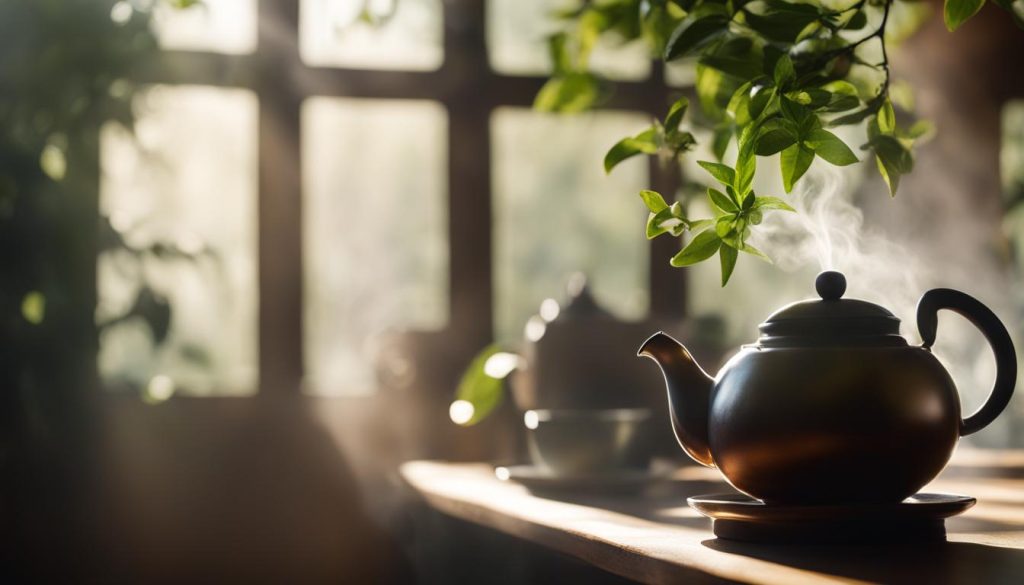
Oolong Tea Varieties Cost-Effectiveness
When it comes to cost-effectiveness, certain oolong tea varieties stand out. We have selected the best overall options, the best organic tea, the best value, and the best affordable option for you to consider.
Best Overall: Tie Guan Yin Tea Monkey-Picked Chinese Tea
This unique oolong tea variety offers a delightful flavor and high-quality leaves. Its exquisite taste and rich aroma make it a top choice for tea enthusiasts who value both quality and flavor.
Best Organic: Prince Of Peace Organic Oolong Teabags
If you prefer organic options, these oolong teabags are an excellent choice. Made with organic tea leaves, they offer a smooth and refreshing taste while ensuring you receive the health benefits of oolong tea without any harmful chemicals or additives.
Best Value: Pantenger Oolong High-Altitude Loose Leaf Tea
For those looking for a great balance between taste and affordability, Pantenger Oolong High-Altitude Loose Leaf Tea is the perfect choice. Its premium taste and decorative packaging provide a luxurious tea-drinking experience without breaking the bank.
Best Affordable: Foojoy China Classic Min-Nan Oolong Teabags
If you’re on a budget but still want to savor a delicious cup of oolong tea, Foojoy China Classic Min-Nan Oolong Teabags are an excellent option. These teabags offer a great flavor at an affordable price, allowing you to enjoy the richness of oolong tea without compromising your budget.
| Oolong Tea Variety | Cost-Effectiveness |
|---|---|
| Tie Guan Yin Tea Monkey-Picked Chinese Tea | Best Overall |
| Prince Of Peace Organic Oolong Teabags | Best Organic |
| Pantenger Oolong High-Altitude Loose Leaf Tea | Best Value |
| Foojoy China Classic Min-Nan Oolong Teabags | Best Affordable |
Oolong Tea Benefits
Oolong tea offers a range of benefits for overall health and well-being. Its potential to aid in weight loss, improve heart health, regulate blood sugar levels, and contribute to cancer prevention and dental health make it an excellent choice for those seeking a healthier lifestyle.
Weight Loss
Drinking oolong tea can support weight loss efforts. Studies have shown that oolong tea can boost metabolism and enhance fat burning, making it a valuable addition to a balanced diet and exercise regimen.
Heart Health
Oolong tea has been associated with improved heart health. Regular consumption of oolong tea may help reduce cholesterol levels, particularly LDL (bad) cholesterol, thus reducing the risk of heart disease and stroke.
Blood Sugar Regulation
Oolong tea has shown promise in regulating blood sugar levels. It may help reduce blood sugar spikes after meals and improve insulin sensitivity, making it beneficial for individuals with diabetes or those at risk of developing the condition.
Cancer Prevention
The antioxidants present in oolong tea may have cancer-fighting properties. These antioxidants help neutralize harmful free radicals in the body, which can prevent cell damage and reduce the risk of certain types of cancer.
Dental Health
Oolong tea contains fluoride, which is known for its beneficial effects on dental health. Fluoride helps strengthen tooth enamel, preventing tooth decay and cavities. Regular consumption of oolong tea, along with proper oral hygiene practices, can contribute to better dental health.
| Benefits | Description |
|---|---|
| Weight Loss | Aids in boosting metabolism and promoting fat burning. |
| Heart Health | Reduces LDL cholesterol and lowers the risk of heart disease. |
| Blood Sugar Regulation | Helps regulate blood sugar levels and improves insulin sensitivity. |
| Cancer Prevention | The antioxidants may have cancer-fighting properties, reducing the risk of certain types of cancer. |
| Dental Health | Contains fluoride, which contributes to better dental health and prevents cavities. |
Can You Drink Oolong Tea Everyday?
Oolong tea is a delicious and refreshing beverage that can be enjoyed on a daily basis without any adverse effects. However, it is crucial to be mindful of its caffeine content and adjust your consumption accordingly.
Compared to other types of tea, oolong tea contains moderate levels of caffeine. The exact amount can vary depending on factors such as the specific oolong tea variety and how it is brewed. Brewed oolong tea typically contains around 30-60 milligrams of caffeine per cup, which is significantly less compared to a cup of coffee.
If you are sensitive to caffeine or want to limit your intake, there are strategies you can employ. One method is to space out your oolong tea consumption throughout the day. Instead of steeping a fresh cup each time, you can reuse the same oolong tea leaves to make multiple infusions. This technique reduces the overall caffeine intake while still allowing you to enjoy the rich flavors and aromas of oolong tea.
The Caffeine Content of Oolong Tea Varieties
To help you make informed choices about oolong tea consumption, here is an overview of the caffeine content in different oolong tea varieties:
| Oolong Tea Variety | Caffeine Content |
|---|---|
| Tie Guan Yin (Iron Goddess) | Approximately 30-40mg per cup |
| Da Hong Pao (Big Red Robe) | Approximately 40-50mg per cup |
| Milk Oolong | Approximately 20-30mg per cup |
| Dong Ding (Frozen Summit) | Approximately 30-40mg per cup |
| Tung Ting (Frozen Summit) | Approximately 30-40mg per cup |
Please note that these caffeine levels are approximate and can vary based on factors such as brewing time, water temperature, and personal preference.
Ultimately, the decision to drink oolong tea every day depends on your individual tolerance to caffeine and personal preferences. If you enjoy the flavors and benefits of oolong tea, incorporating it into your daily routine can be a delightful and refreshing habit. Just remember to listen to your body and make adjustments as needed.
Should Milk be Added to Oolong Tea?
When it comes to enjoying a cup of oolong tea, the traditional preparation does not involve adding milk. Oolong tea is appreciated for its sophisticated flavors and aromas, which are best experienced without any additives. However, there is one exception to this rule – Milk Oolong Tea.
Milk Oolong Tea is a special variety of oolong tea that naturally possesses a creamy and delicate flavor profile. The leaves of this tea cultivar impart a subtle milky taste during the production process. It is important to note that this unique flavor is obtained without the use of milk powders or flavorings.
If you prefer a creamier taste, you can experiment with adding milk to regular oolong tea, keeping in mind that this deviates from the traditional preparation. However, it is crucial to choose high-quality oolong teas that do not contain any artificial additives. Additionally, some flavored oolong teas on the market may already have artificial flavorings added, so it’s important to read the product labels carefully.
In the end, the decision to add milk to oolong tea is a personal preference. Traditional oolong tea enthusiasts tend to enjoy its pure and nuanced flavors without any additions. However, those who appreciate a creamier taste can explore the unique flavors of Milk Oolong Tea or experiment with adding milk to regular oolong tea for a customized experience.
